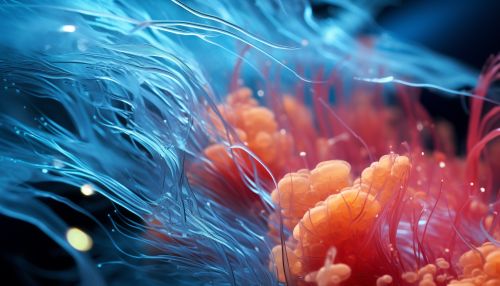Electrogenic bacteria
Introduction
Electrogenic bacteria are a group of microorganisms that have the ability to generate an electric current. This ability is due to their unique metabolic processes, which involve the transfer of electrons to an external electron acceptor. This process, known as extracellular electron transfer (EET), is a key feature of electrogenic bacteria and distinguishes them from other types of bacteria.


Metabolic Processes of Electrogenic Bacteria
Electrogenic bacteria are known for their unique metabolic processes, which involve the transfer of electrons to an external electron acceptor. This process, known as extracellular electron transfer (EET), is a key feature of electrogenic bacteria and distinguishes them from other types of bacteria.
In EET, the bacteria transfer electrons from their metabolic processes to an external electron acceptor. This can be a solid mineral, a dissolved substance, or even an electrode in a microbial fuel cell. The transfer of electrons is facilitated by a range of proteins and other molecules that are located in the bacterial cell membrane.
Types of Electrogenic Bacteria
There are several types of electrogenic bacteria, each with unique characteristics and abilities. These include:
- Geobacter species: These are perhaps the most well-known electrogenic bacteria. They are capable of reducing a variety of substances, including iron, uranium, and other heavy metals. Geobacter species are often found in environments where oxygen is limited, such as in soils and sediments.
- Shewanella species: These bacteria are also capable of reducing a variety of substances, including iron, manganese, and uranium. Shewanella species are often found in aquatic environments, including both freshwater and marine environments.
- Rhodoferax species: These bacteria are capable of reducing iron and other substances. Rhodoferax species are often found in soils and sediments.
Applications of Electrogenic Bacteria
Electrogenic bacteria have a number of potential applications, particularly in the field of bioenergy production. For example, they can be used in microbial fuel cells, where they generate electricity by transferring electrons to an electrode. This process can be used to generate electricity from organic waste materials, providing a sustainable and renewable source of energy.
In addition to their potential use in bioenergy production, electrogenic bacteria also have potential applications in bioremediation. This is the use of organisms to remove or neutralize pollutants from a contaminated site. Electrogenic bacteria, with their ability to reduce heavy metals and other substances, could potentially be used to clean up contaminated soils and water.
Future Research Directions
While there has been significant research into electrogenic bacteria, there is still much that is unknown about these fascinating organisms. Future research will likely focus on understanding the mechanisms of EET in more detail, as well as exploring the potential applications of these bacteria in bioenergy production and bioremediation.
